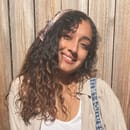My earliest recollection of realizing I was different than my white peers was in the second grade. My friends told me I couldn’t be Belle, my favorite princess at the time, because I looked nothing like her. In fact, I didn’t look like any of my favorite princesses. You might think this is frivolous, but as an eight-year-old girl, it hurt. When we’re little we think we can be anything, and I’m sure many other POC remember the first time they realized society put restrictions on what we could be. It was around this time I began to realize that none of my favorite characters from TV shows and books ever looked like me and I started feeling self-conscious about my ethnicity. I was the only Indian girl in my class, and on “Bring Your Grandparents to School Day,” I remember feeling embarrassed at my grandparents’ broken English. I never wanted my parents to speak Punjabi around my friends or when we went out in public.

My whole life I grew up in very white communities, and, like most teenagers, I just wanted to fit in. I tried to get as far away from being labeled “the Indian girl,” “the super studious Indian girl,” or “exotic” because that’s never how I saw myself. I just saw myself as me. Yet, in doing so, I also cut myself off from my amazing and rich culture. I tried to dilute my Indianness. I don’t speak Punjabi nor eat much Indian food. But as I got older, I became more and more embarrassed that I couldn’t speak Punjabi. Anytime my elders talked to me, I’d just give them a stupid look and repeat the only two words I knew, cringing at the beautiful language in my own harsh American accent. And hence, the Indian-American predicament is born: not American enough but not Indian enough either. I was constantly confused about where I fit in the world. I recently watched Never Have I Ever on Netflix, and there’s a scene where she experiences just that. Honestly, I almost cried watching it play out because I had never seen my struggles portrayed so candidly.

Entering college, I still majorly struggled with my identity. I continued to try to distance myself from my ethnicity. I think I was trying to prove that I was more than the Indian girl stereotype. But alas, I was destined to fail as I could never be seen as fully American because I’d never be white; I’d never “look American.” Instead, I was constantly met with more micro-aggressions, being confused with other brown girls, and hearing things like “You’re pretty for an Indian girl” or “You’re so white-washed” or “I have a thing for Indian girls.” It brought back the feelings I had from childhood. I wanted to be more than my ethnicity. I think my friends tried to sympathize at the time, but you can’t really understand the feeling unless you’ve experienced it. That’s why I love meeting fellow Indian-Americans because they can understand a part of my experience that few others do.
During quarantine, I came across some very cool shows and music by Indian-Americans which made me fall in love with my culture all over again. Shows created by and featuring people such as Hasan Minhaj, Mindy Kaling, and Hannah Simone reflected my own experiences as an Indian-American. And slowly, I began to embrace both identities.

To all my other Indian-Americans: own it! We are two sides of the same coin. We have our own identity and though we are a minority, we have a beautiful culture and live in a place where we can show others its beauty. Let’s give our identity life and confidence so that the future Indian Americans don’t have to question where they fit in.



